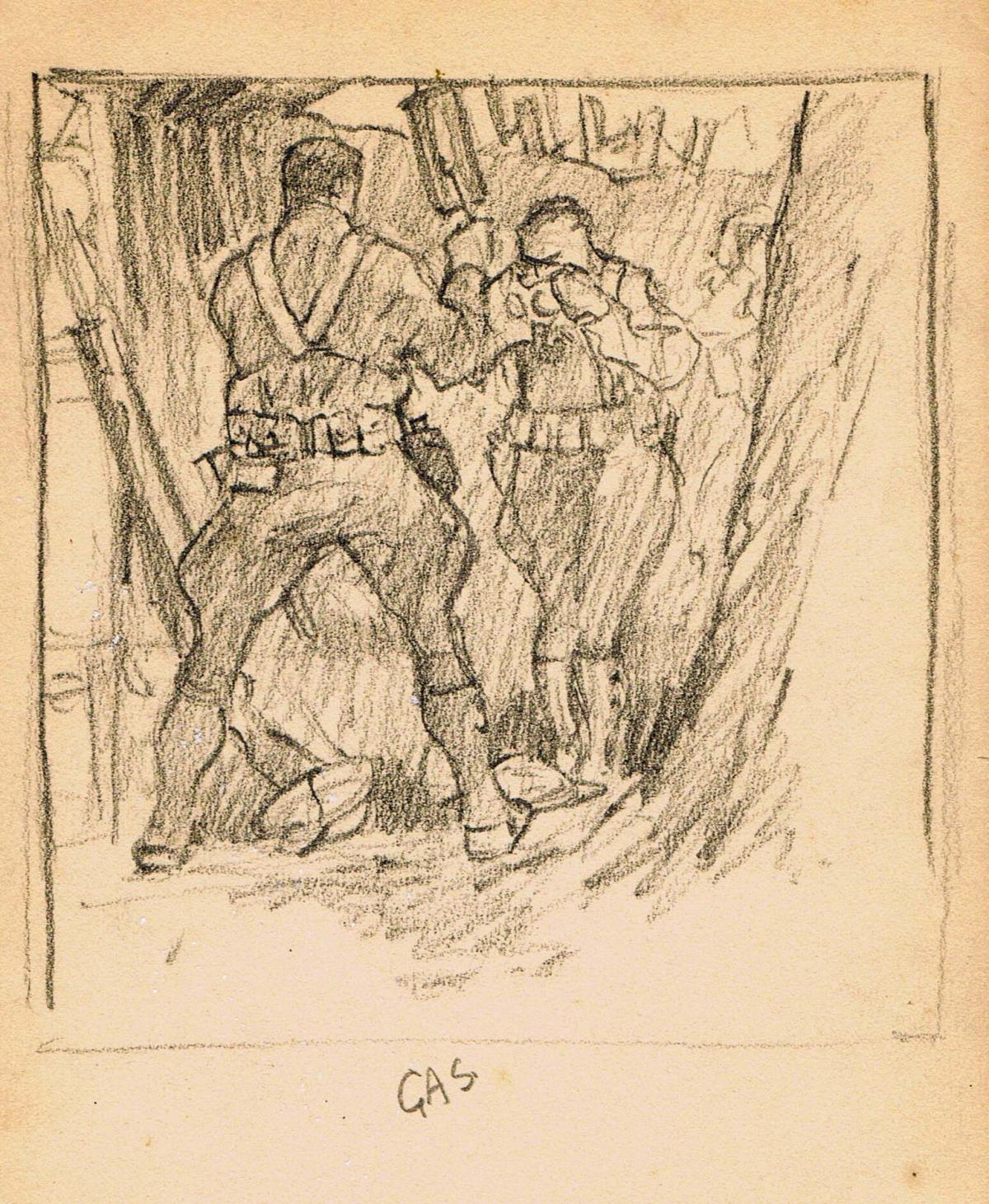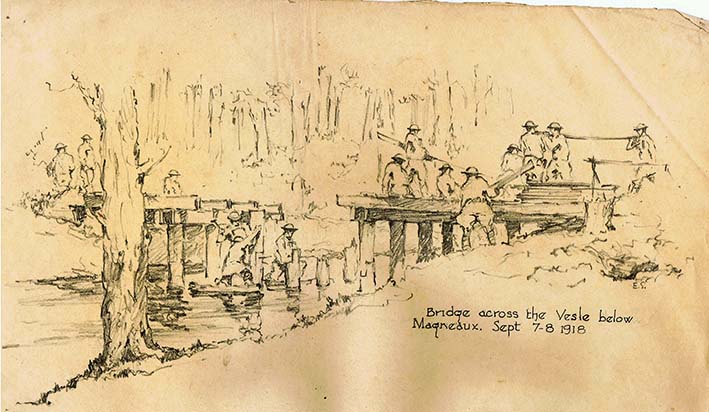Here's the two images he sent me and his letter.
Hi Marion:
Thanks so much for your reply and for posting my letter on your bolg. I visited your "No Bridge Too Far" site and I think you will be quite interested in Company B, 103rd Engineers' work in and around the French town of Fismes in September of 1918. They were building bridges under heavy German small arms and artillery fire. Here is an excerpt:On August 12, the engineers were finishing up the ambulance bridge. The decking planks had to be nailed in place, but any noise would bring machine gun fire. The men were equipped with hammers and proceeded to nail down all the planks at once creating a loud racket. In less than a minute, shellfire hit near the bridge covering the men with mud and water, and the machine gun bullets began to fly, but by then the work was complete. The bridge was finished and no one was wounded.
While conditions in Fismes were difficult and dangerous, those back at les Petites Chexelles Farm were little better. Despite their distance from the enemy, they still received their share of attention from the German guns firing at the nearby artillery battery. On August 13th shells killed several horses and gassed the battery on the hill above the farm. The mustard gas rolled down into the dugouts where the men were sleeping. Despite efforts to fan out the trenches with paddles, fifteen men were wounded and had to be evacuated to the hospital.
# 100 Gas
Company B built wagon bridges east of Fismes, in Villette, Magneux and Courlandon to accommodate the tremendous volume of traffic headed to the front. Despite their retreat, the enemy was still able to shell the Vesle and men were still being killed, gassed and injured; they could still only do their work at night.
# 104 Bridge across the Vesle below Magneaux
Proud Daughter of Walter (Monday) Poniedzialek
540th Engineer Combat Regiment, 2833rd Bn, H&S Co, 4th Platoon
There's "No Bridge Too Far"






